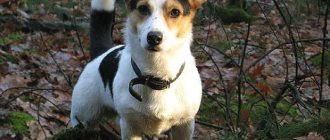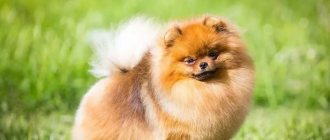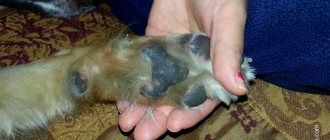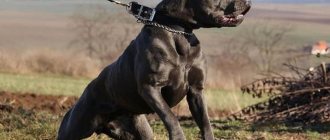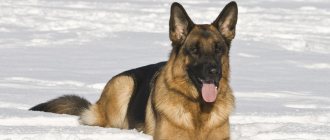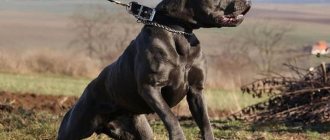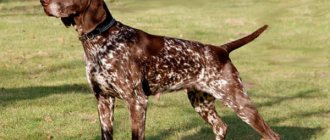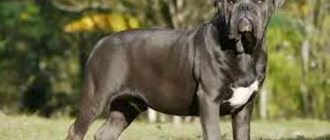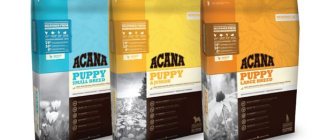Sooner or later, every hunter begins to dream of a dog partner. And if hunting birds and small animals occupies the main place in your hobby, then the choice will probably fall on a gun dog. Universal gun hunting dogs are continental pointers. Of these, let's leave aside the Braccos and Vizslas, and focus on the German cops - the Drathaar and the Shorthaired Pointer. But the problem is which breed to choose, better: shorthaired pointer or drathaar.
These dogs have excellent top and bottom senses and are indispensable when hunting (with a stand) swamp, field and forest game. Each of them is an excellent swimmer and will willingly go into the water after a shot duck. Hunting for small animals will also not disappoint the hunter who has a drathaar or shorthaired pointer under his gun.
Comparison of breeds
| Characteristics | Kurzhaar | Drathaar |
| Colors | black or brown, often with white markings | black or brown, liver, piebald |
| Weight | males 25-32 kg; females 21-27 kg | 23-32 kg |
| Height at withers | up to 66 cm | males 61-68 cm; females 57-64 cm |
| Wool | the coat lies close to the body, short and smooth | coat with short and dense undercoat, hard and dense |
| Lifespan | 12-15 years | 12-14 years old |
What distinguishes the shorthaired pointer from the drathaar is, first of all, the wool and its quality. When comparing dogs of these breeds, even in the photo, differences in the hair of the animals are visible. It is no coincidence that shorthaired pointer is translated from German as “short wool”, and drathaar is “wire wool”.
Photo of drathaar
Photo of shorthaired pointer
The shorthaired pointer's hair is short, hard to the touch, and lies tightly to the skin. The drathaar has a hard coat with a thick undercoat, and also has a beard and mustache.
Experienced hunters claim that a shorthaired pointer with yellow or yellowish tan markings will work well on a blood trail.
Exterior
Drathaar belongs to the group of gundogs, like the Hungarian Vizsla and Weimaraner .
Both exterior and performance qualities are assessed at tests and exhibitions.
- Movements are sweeping and smooth.
— The body is relatively square.
— The head is wedge-shaped, harmonious. The skull is moderately wide, with pronounced brow ridges.
— The muzzle is deep and long, with a slight hooked nose.
— Scissor bite, strong jaws.
- The eyes are preferably dark, not deep-set and not protruding. The look is attentive and expressive.
Drathaars are agile and agile dogs that can keep up with any prey, just like Weimaraner dogs.
- Ears are set wide and high, medium in size.
— The neck is slightly arched and muscular.
— The back and lower back are muscular and strong.
— The tail is of medium thickness, usually in hunting dogs it is docked in the same way as in the Doberman . If the tail is not docked, it should reach the hock.
— The front and rear limbs are straight, parallel. The paws are gathered into a ball.
— The coat is hard, short, emphasizing the contours of the body. There is a waterproof dense undercoat. The muzzle is decorated with a beard and eyebrows.
In addition to hunting, the drathaar can also be used to protect territory
Hunting behavior
Both breeds, the shorthaired pointer and the drathaar, are born hunters. But if the shorthaired pointer can also be a companion dog, then the drathaar is completely devoted to hunting.
The shorthaired pointer works well on upland and swamp game, and in presenting wounded and killed birds, it probably has no equal among the cops.
When hunting, both shorthaired pointer and drathaar will work well for any game, waterfowl and meadow. But, according to hunters with extensive experience, the second “prefers” snipe and woodcock, black grouse and wood grouse.
The shorthaired pointer prefers partridges, quails, great snipes, but also works well on any game birds. Excellent aportation, can follow a blood trail. Although both will enthusiastically and diligently work on other game.
Drathaar and shorthaired pointer usually do not try to stop a large animal. The cops circle around him, indicating with their voices the place where he is.
The shorthaired pointer always makes a stance (like a pointer) towards a bird or small game. He has an innate ability to fetch both from land and from water - in this he is not inferior to a retriever.
The Drathaar is more temperamental and vicious towards game when hunting than the Shorthaired Pointer. He returns softly, his stance is firm. But some experts believe that in training and training he is less intelligent than the shorthaired pointer. Others are sure that it is a matter of proper upbringing and training of the dog.
Dogs of both breeds should be prohibited from “hunting” other pets from puppyhood, otherwise problems will inevitably arise in the future.
When hunting, dogs without hesitation rush into cold water after a wounded animal. However, the drathaar, with its thick coat and dense undercoat, will not freeze as much as the shorthaired pointer. Drathaar has such a thick undercoat that sometimes water cannot get through it. In cold weather, it is better to wipe off the Shorthaired Pointer after “water procedures”, otherwise he will turn from an active dog into a trembling ball of fur. But special overalls for dogs help with this problem.
How to choose a puppy
When choosing a puppy, you should pay attention to the fact that it has clean eyes, nose and ears, and there are no signs of diarrhea or parasite infestation. Healthy animals have a round but not bloated belly and good coat. The puppy should be active, but not excessively. He does not shy away from his brothers and sisters. The smallest and largest puppy in the litter are not the best choice.
Similar breeds
Externally similar breeds are the German smooth-haired and long-haired pointers. They also fall into the category of hunting dogs.
Where to keep: at home or in an enclosure
The peculiarities of keeping representatives of these breeds come from their energy and coat. Ideal for them would be to live in a private house, with a large area for physical activity. These lively, energetic dogs simply need them.
In Russian winter conditions, it is unwise to keep dogs of these breeds in a cold enclosure. This threatens with colds. The best place to keep them is a heated garage or an insulated enclosure, ideally with a heater.
Many hunters who have been hunting with cops for years are confident that for a shorthaired pointer or drathaar to work well, they must always be able to see and smell the owner.
Many dog handlers claim that a dog kept in an enclosure has a keener sense of smell and better immunity against diseases.
Living in a city apartment can create problems for the owner. Ubiquitous dog hair - vacuum cleaners do not help here, especially during the shedding period.
Nutrition
The diet should include only high-quality products.
Those who are really interested in the question of where to buy a Drahthaar dog will be interested to know that there are several types of feeding:
- Only natural products;
- Dry food only;
- Mixed nutrition (natural food + food).
It is very important not to mix natural and dry food in one feeding, which is fraught with health problems such as volvulus, and much more.
Differences and similarities in character
Drathaars are monogamous by nature. They become very attached to their owner and miss him greatly. This is a feature of their character. The drathaar loves children and is ready to run and play with them for hours. With early socialization, he will be loyal to cats in the apartment. But on walks he can get into fights with other dogs and start hunting cats. But this is more of a hunting instinct rather than innate aggressiveness.
The shorthaired pointer is lighter and more cheerful in character. He willingly plays with children and is ready to run for hours and explore the surrounding area.
Each of the dogs is large and massive enough to knock a small child off his feet in play. So the very active pastime of children and animals must be supervised personally.
In relation to people, even strangers, there are no differences between the drathaar and the shorthaired pointer. Aggression towards humans is practically excluded in both breeds. Therefore, both shorthaired pointer and drathaar will never become a guard dog.
History of the origin of the species
It is believed that the Kurzhaar's homeland is Germany, and that it appeared in the mid-19th century. However, the real origin story is still unknown.
Most likely, this shorthaired pointer was bred as a result of crossing Spanish pointers and English foxhounds and various hounds. They were heavier and slower than today's representatives of the breed. To make it lighter and faster, this dog was crossed with the English Pointer. According to many breeders, this is how the breed appeared.
The Shorthaired Pointer breed was bred to hunt birds. They were also used for falconry. And in times when weapons appeared, this breed became even more in demand for hunters. They shot the bird right in front of the dog’s eyes and gave the command to bring the carcass, which the pet did remarkably well.
By now, the dog has already lost its excellent hunting skills, due to the decreasing need and popularity in hunting. Many breeders are trying to bring them back.
Behavior in the house of shorthaired pointer and drathaar
Drathaar can also be mischievous in an apartment—gnawing pieces of furniture and shoes. But only when he does not walk much, or the owner is not at home for a long time. He vitally needs spiritual closeness with his owner, to know that he is loved.
The shorthaired pointer hunts the owner's cats less often than the dratha. But the first one is noisier. Therefore, you need to teach your pet when to bark and when not to bark from an early age. The difference between the shorthaired pointer and the drathaar lies in its lighter and more cheerful approach to life in general, be it games, hunting or communication with the owner.
Training and education
Shorthaired Pointer or Drathaar - the training of both breeds does not differ much, either in terms of hunting skills or in terms of socialization of the dog. These animals have a fairly high intelligence, and no great difficulties are expected in raising them. Basics of training:
- It is better to start training from puppyhood; babies have innate intelligence and learn commands well.
- Once a prohibition has been determined, it must always be observed.
- Commands are given clearly and distinctly, but without shouting.
- If, during training, a dog (and especially a puppy) correctly follows commands, it is advisable to treat him with a tasty piece. Use the “carrot without the stick” method.
- You can't hit a dog!
- It is undesirable to delay lessons, especially with puppies - the kids get tired of this.
- Do not deceive your dog, even to achieve academic results.
- It is advisable to conduct classes regularly, without taking long breaks between “lessons”.
Features of care and maintenance
And here representatives of the breed, both one and the other, will not cause much trouble to the owners. Make sure your ears and teeth are clean. If the nails do not wear down naturally, they need to be trimmed. The coat needs to be brushed periodically. The Drathaar does not need trimming, especially the show specimen.
Price of puppies
If you need a dog for further breeding, you should take a puppy from serious breeders, with a pedigree and a hunting dog certificate. Samples of correct pedigrees and certificates can be found on the Internet, on the websites of hunting dog clubs. We must not forget about the pet’s veterinary passport.
Some clubs issue pedigrees of their own type, which are not valid anywhere. Such pedigrees are not recognized by the RKF (Russian Cynological Federation), RFOS (Russian Federation of Hunting Dogs), RORS (Association RosOkhotRybolovSoyuz).
Be careful when purchasing. If you need a dog: “It’s possible without a pedigree, I need it for hunting” - think about whether it’s worth taking a cheaper one from an unscheduled mating. You may subsequently encounter defects characteristic of these breeds. The price of a good puppy for both shorthaired pointer and drathaar starts from 20,000 rubles. You can buy it for 5,000 or a thousand, and take it from a shelter for free - all the risks are on you. Maybe you'll get lucky.
Which breed is better, who to choose - drathaara or shorthaired pointer, each hunter decides for himself. In any case, the love of these dogs is boundless and selfless for their owner.
Rules of care
The fur sheds twice a year. However, if the dog is kept in a room with warm and dry air, then the shedding season for him never ends. It is recommended to brush the coat 1-2 times a week with a stiff brush.
Bathing is allowed no more than 2 times a year, otherwise the stiffness and other natural qualities of the coat will be lost.
The eyes should be wiped once a week with a damp swab (chamomile, tea, etc.) to prevent possible inflammation.
We must not forget about the ears, which need to be ventilated regularly. To do this, you just need to wave them in different directions.
If dirt is found, remove it with a damp swab. If inflammation, foul odor, or discharge is present, seek immediate medical attention.
After every walk, check your four-legged friend’s paws for cuts, splinters and cracks. If the latter are detected, then this is evidence of an insufficient amount of fat in the body.
Undoubtedly, the price of drathaars is high, but the life of your pet will cost even more. Proper care, nutrition and timely veterinary care will help maintain your pet’s health in good condition.
